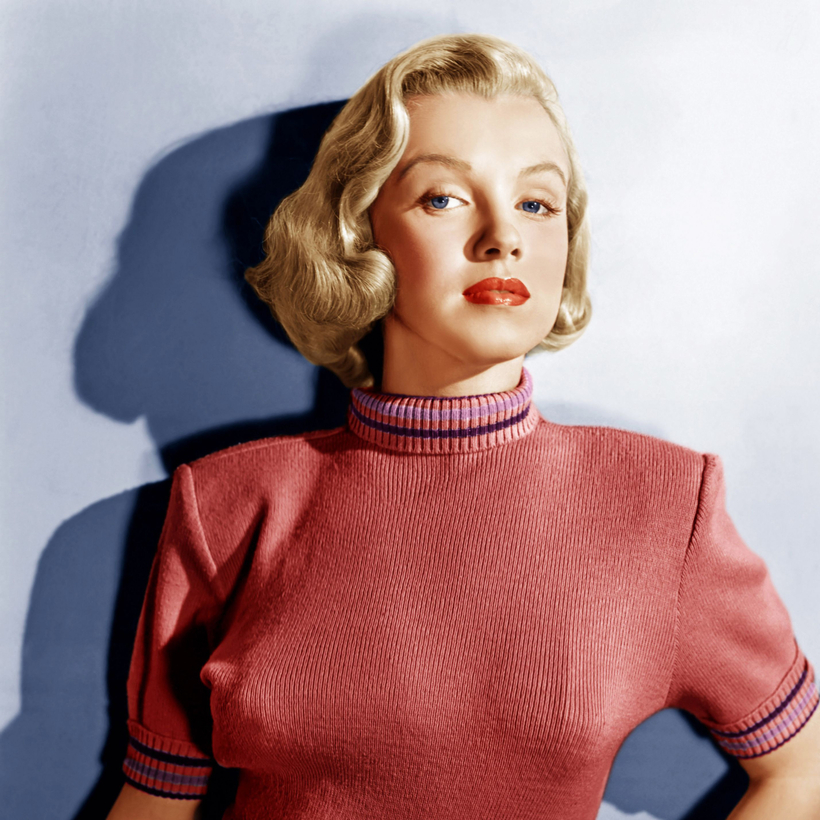In the film Gentlemen Prefer Blondes, Marilyn Monroe purrs: “Men grow cold as girls grow old / And we all lose our charms in the end”. But 60 years after her death, the charms of Hollywood’s ultimate blonde bombshell have barely faded.
Netflix recently released a trailer for its biopic, Blonde, starring the Cuban actress Ana de Armas. In it she cries in front of a mirror before switching on the megawatt Monroe smile.
The film, which is released in September, is based on the best-selling novel of the same name by Joyce Carol Oates, which blurred fact and fiction, and will explore the tension between Monroe’s public and private life, including her alleged affair with President John F Kennedy. It has already sparked controversy, with a rare adults-only NC-17 rating in America because of its sexual content.

The trailer is the latest proof of the world’s abiding fascination with Monroe in a summer heaving with other examples. Few stars have cast such a long shadow. Andrew Wilson, a novelist and biographer whose next book is about the actress, said that this stems from her mystique, which allows fans to have their own view of who she was. Plain Norma Jeane Mortenson could go almost unnoticed in the street, but then transformed into the movie goddess Monroe, the character she created, who was luminescent on-screen.
“She is so open for interpretation and reinterpretation — anyone can project anything they want onto Marilyn and get something back,” Wilson said. “That’s the classic definition of a star.”
He added that her early death at 36 from an overdose of barbiturates, which was ruled a probable suicide by the Los Angeles coroner, meant that she never grew old in front of the cameras but was was frozen in time. Her personal life, including marriages to the playwright Arthur Miller and the baseball star Joe DiMaggio, and particularly her intimacy with JFK, add to her appeal, Wilson said. The Danish actor Caspar Phillipson has been cast as Kennedy in Blonde, having already played the former president in the 2016 biopic of his wife, Jackie Kennedy.
It has already sparked controversy, with a rare adults-only NC-17 rating in America because of its sexual content.
The crystal-embellished gown Monroe wore to sing Happy Birthday to Kennedy in 1962 has also been in the news this month. After its owners, Ripley’s Believe It or Not!, lent the dress to the reality TV star Kim Kardashian for last month’s Met Gala, photographs posted on Instagram appeared to show it had been badly damaged, with a shoulder strap frayed and some crystals missing. Ripley’s museum, which bought the dress for $4.8 million in 2016, denied it had been harmed.

Monroe’s role as an artistic muse has also put her back in the spotlight. Last month one of Andy Warhol’s silkscreen paintings, known as Shot Sage Blue Marilyn, was sold by Christie’s for $195 million in New York, making it the most expensive work by an American artist ever auctioned. It is part of a series painted in 1964, two years after Monroe’s death.
Two documentaries about Monroe have also been released this year. The Mystery of Marilyn Monroe: The Unheard Tapes, which was released on Netflix in April, takes a “true crime” lens to her final hours, examining how her rumored relationships with Kennedy and his brother Robert and her left-wing politics could have put her in a dangerous place with the US government.
“Anyone can project anything they want onto Marilyn and get something back.”
A French documentary, Marilyn, Her Final Secret, which premiered in April, sought to solve the mystery of who Monroe’s biological father was. The program analyzed a sample of her hair and named her mother’s colleague, Charles Stanley Gifford. Monroe, who grew up in orphanages and foster homes in Los Angeles after her mother, who had schizophrenia, abandoned her, never knew her father’s identity.
Wilson added that Monroe was ahead of her time, too. “She was one of the first stars of the public era who examined herself — almost having therapy in the full view of the public eye — making her a very modern celebrity,” he said. “She was always asking, ‘What does it mean to be Marilyn Monroe?’ Marilyn was also quite messy. That gives her a realness and rawness that you don’t really get any more.”
Long viewed as a victim, Monroe’s life is also being re-appraised in light of the MeToo movement, Wilson said. “There was always this argument about was Marilyn a victim or a manipulator?” he said.

“She had some terrible experiences with the ‘casting couch’, and it would be easy to interpret her as a victim of Hollywood at its worst, but at the same time, she was very savvy when it comes to business … She is one of those stars who resists binary interpretation, because she’s not ‘either, or’: she contains multitudes.”
Amy Greene, the wife of the late photographer Milton Greene and a friend of the actress, has spent six decades trying to make the case that Monroe was not a passive person. “She was never a victim … never in a million years,” she told Vanity Fair this year. “She was a young, vital woman who loved life, loved parties, and had a good time.”
Frustrated at the parts she was offered, Monroe created her own production company, Marilyn Monroe Productions, which was behind 1957’s The Prince and the Showgirl, with Laurence Olivier. At the time male stars such as Kirk Douglas and John Wayne had creative and financial control over their careers, but female stars did not. The path Monroe set has been followed by many actresses, including Reese Witherspoon, Charlize Theron and Margot Robbie.
Rosamund Urwin is the media editor for The Sunday Times

